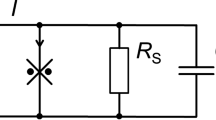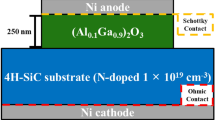Abstract.
Positrons from a radioactive source are implanted into a reverse-biased metal–semiconductor contact and are drifted back towards the contact by the internal electric field where they trap into voids and annihilate. The electric field dependent interface annihilation fraction is monitored by way of the intensity of the long (∼400–500 ps) void lifetime component using positron-lifetime spectroscopy. Unlike previous analyses of such systems a numerical model involving positron drift, annihilation and trapping into the interfacial state has been constructed to describe the positron dynamics in the presence of the non-uniform junction electric field. The use of the positron-lifetime technique in probing the internal electric field at buried contacts is thus demonstrated. Results obtained using the numerical method for the Au, Al and Ni/Semi-Insulating (SI)-GaAs contact systems are found to be consistent with the findings of previous studies on the Au/SI-GaAs system.
Similar content being viewed by others
Author information
Authors and Affiliations
Additional information
Received: 29 November 2000 / Accepted: 26 February 2001 / Published online: 25 July 2001
Rights and permissions
About this article
Cite this article
Shek, Y., Ling, C., Beling, C. et al. Electric field of a buried interfacial region measured by positron-lifetime spectroscopy . Appl Phys A 74, 233–237 (2002). https://doi.org/10.1007/s003390100875
Issue Date:
DOI: https://doi.org/10.1007/s003390100875




